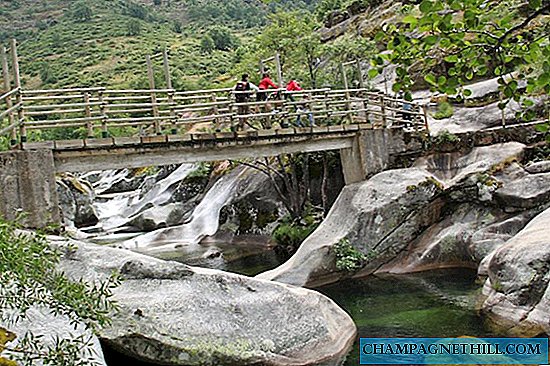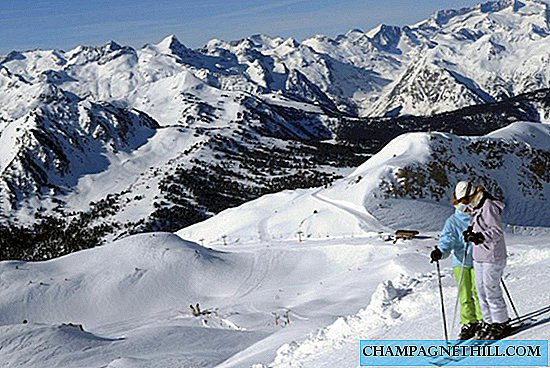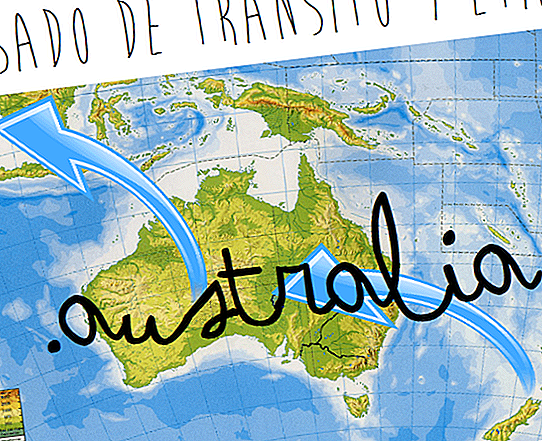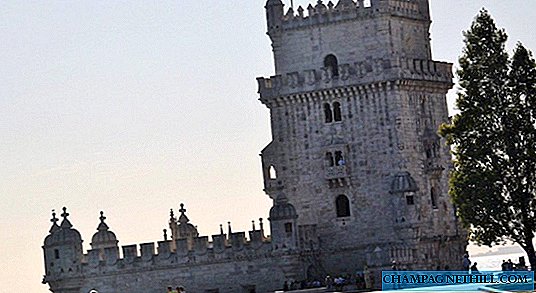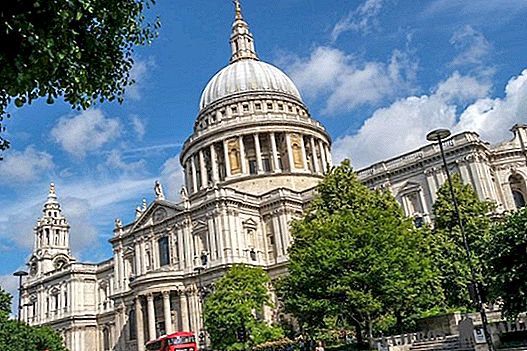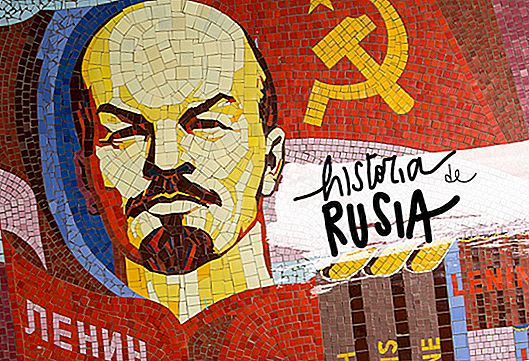
If you close your eyes and think about the history of Russia, chances are that instant snapshots of the Bolshevik Revolution, the lavish palaces of the czars, the uniforms of the KGB or images of World War II or of the Cold War. The Russian history It is long, complex and very, very interesting. Often eggplant then get to write a summary of something so broad ... Yes, but we believe that if you are going to travel to this country, it is important to know, even if above, key moments in the history of Russia. This way it will be easier for you to understand their present, their people and their mentality, the cities with their monuments and in general, their life.
So here we go: get very comfortable, we will go back in time to better understand this peculiar country. Here goes our (not so) brief summary of the history of Russia. We have divided it into 3 parts:
- History of Russia from its beginnings to 1900
- History of Russia from 1900 until the fall of the USSR
- History of Russia from the fall of the USSR to the present day
The beginnings of the Rus of Kiev, the arrival to the power of the czars, the failed attempt of Napoléon to be done with Russia ... We are going to review, synthetically, the first centuries of the country's history.
1. Birth of the “country” and time of the Rus of Kiev
Due to the enormous territory of the country, Russia has always been inhabited by numerous peoples. But there are two, more than any other, that drove the birth of a true country: Slavs and the Varegos (Vikings of Scandinavian origin). We are in the second century and this union will soon lead to the birth of the future peoples of Russia, Belarus and Ukraine.
But we do not run so much ... One of the key moments in the history of Russia occurs in the year 882, when Oleg the Wise, a varego prince, succeeds Rurik and unifies for the first time the north (Novogorod) and the south (Kiev). The “just born”Antigua Rus”And moves the capital to Kiev (now the capital of Ukraine). This is a golden age, thanks especially to the creation of a very important trade route, which linked the Baltic with the Black Sea.
But the splendor would not last long: the following centuries will be well moved. The Rus of Kiev will spend years of total decline, both political and cultural, unity is lost and the territory is divided into principalities, many of which will soon succumb to the attacks of Mongols and Teutons.
A key figure of the thirteenth century and that will go down in history as one of the heroes of the Holy Mother Russia is Alexander Nevsky, a prince who knew how to negotiate with the Mongols (and thus avoid a destructive invasion), and who managed to defeat the Teutonic and Swedish armies. He has always been revered (until sanctified), but it will be much later (in 1938) with a film dedicated to his exploits, when he will be considered a hero of the Motherland.
Curiosity: they say it was Stalin himself who convinced the filmmaker Sergei Eisenstein to shoot that film, in order to create a sense of collective sacrifice in the face of what was about to arrive ... World War II.
2. Orthodox faith
We make a brief paragraph to present one of the key aspects of Russian culture: the Orthodox religion. Remember that until 1054 there was only one Christian Church, but with the Eastern Schism occurred in that year, Catholics and Orthodox divide their paths. From the Rus of Kiev, the country processed the Catholic faith, but in 988 the Byzantine Empire religion was adopted, which would derive in the Orthodox. Religion was always a pillar for the Russians, although as we will see later, it suffered a severe blow during the first years of Stalinism.
Some main differences between orthodox and catholic They are:
- Orthodox do not believe in the figure of a single pope, they have different referents (metropolitan / patriarch).
- They do not believe in the immaculate conception of the Virgin Mary, they believe that she was born with original sin.
- Catholics believe in purgatory, Orthodox do not (although in heaven and hell, and in a final judgment)
- They admit divorce, not Catholics. In addition, the Orthodox believe in obligatory celibacy only for bishops.
- They believe that the Holy Spirit comes from the Father. The Catholics that comes from the Father and the Son.
- They cross themselves starting on the right, Catholics on the left.
- During orthodox baptism, the body is immersed entirely in water.
- The Orthodox do not have the concept of late first communion as in Catholicism: since childhood children receive communion.
- The Catholic clergy does not wear a beard, the Orthodox does (and also a lot).
- The Catholic churches are full of statues, for the Orthodox that is unthinkable: they only use two-dimensional icons since representing the saints with three-dimensional bodies is like giving them humanity and taking away divinity.
- More info
3. The principality of Moscow and the beginning of Zarato with Ivan the Terrible
From the fourteenth century, the Principality of Moscow He begins to lift his head and gradually acquires power and wins battles. The first tsar already had a name: Ivan IV (1530-1584), a man with such a strong personality that he will go down in history as Ivan the Terrible, from the Rurik dynasty.
During his reign Russia grew geographically (territories such as Kazan and Astrakhan were annexed), legislatively (a new code of laws was promulgated) and as a world power (the fame of Ivan IV crossed borders). One of the bloodiest episodes he starred in was the murder of his own son (and heir to the throne, fundamental data). Long story short: gave him a wafer in the face that killed him. Ivan was left without successor and his dynasty ended in a short time ...
4. The Turbulent Period
The fact that a dynasty ended like this at once, without having any new heirs or successors, always causes chaos. In 1598 we entered at one of the most decadent times in the history of Russia: the Turbulent Period, caused by a power vacuum and marked by absolute lack of control. Presumed tsars arise everywhere, which proclaim themselves as unique and chosen.
The situation will only be resolved in 1610 when the nobility and the clergy choose who will be the new country leader: Miguel Romanov, the first of the Dynasty that will reign until the end of Tsarism. Who was Miguel? He was a 16-year-old boy, whose grandfather was brother of Tsarina Anastasia, wife of Ivan the Terrible (and great love of his life).
5. Peter the Great and Catherine the Great
A few years later, in 1682, a man who would change the history of Russia comes to power: Peter I, better known as Peter the Great. He was grandson of Miguel Romanov and was a very intelligent man, ahead of his time, with a faithful court and true friends.
It was key because he understood for the first time that Russia was quite late with respect to Europe. To remedy it, he decided to introduce European culture in Russia. Although not throughout the country, it is clear. What he did was create a city out of nowhere, St. Petersburg, with the idea that it was the most beautiful, imposing and incredible city in the world. He got it? You will have to meet her to discover it.
As for military achievements, there is a fundamental one: he defeated the Swedish empire and got Russia to have access to the Baltic Sea (and on the way to trade in Europe).
There would be so many things to tell about Peter the Great that this post would never end ... Like he locked his sister in the Novodevichy Monastery in Moscow (guilty of conspiring to keep power); or who traveled incognito for years in Europe and learned, among other things, to master 14 different trades (from carpentry to the observation of stars, from gardening to ... to get teeth!).
In 1725 Pedro I dies and, after short reigns, a figure enters the scene that ends up eclipsing the fame of other Russian czars: Catherine II of Russia, known as Catherine the Great, which consolidates the country as one of the great world powers.
Much has been told about her figure, including her lively sex life, in which we prefer not to enter… There are theories that defend that Catalina was to blame for the death of her husband (Pedro III, grandson of Pedro El Grande, who officially died because of hemorrhoids ahem), to stay alone with the power (the same son thought about it and that's why he hated the mother). To say that they were golden years would be to miss the truth: they were for the czars and for the aristocracy, but the people suffered, the conditions were increasingly disastrous and they began to cook what would later translate into the October Revolution.
6. The arrival of Napoleon
The Russian invasion attempt Napoléon Bonaparte is undoubtedly his biggest failure (although Waterloo always remains, of course).
The historical context is this: we are in the early 1800s, with the reigning Tsar Alexander I, grandson of Catherine the Great and friend of Napoleon. But the nobility is not satisfied with the relationship or with the demands that the "French emperor" had. Total, that friendship is broken and Napoleon invades Russia with an army of more than half a million men. At first the Frenchman has everything to gain (in fact he comes to Moscow), but he had not taken into account a great enemy: the russian winter, and ends up failing. More info here.
The successor of Alexander I is Alexander II, who dies because of an attack (in the place where it took place, the beautiful Cathedral of the Savior on Spilled Blood was raised in St. Petersburg).
Curiosity: Alexander II suffered several attacks until his death, one of them was organized by the older brother of Lenin, who was arrested, tried and executed. They say his death had a brutal effect on Lenin's life, which a few years later would forever change the history of Russia.
The twentieth century was a true succession of momentous historical events for Russia. It is an exciting time and at the same time complicated, we can say that few countries had the luck and misfortune of living so much in such a short time. Let's try to summarize it.
1. The end of zarato, the October Revolution and Lenin
The reign of Nicholas II, the last czar of Russia, lasted until 1917, the year he abdicated after the February Revolution, and a communist government takes power. How did this Revolution come about? The people were essentially tired, tired of having to defend a tsarist regime that did not represent them. The straw that broke the glass was the participation of Russia in the First World War, with an army that did not believe what it was fighting for and was so weakened that it simply could not win.
The situation is this: the Tsar abdicates and with his family is sent into exile to Yekaterinburg. The provisional government guided by Kerensky it is installed in Moscow, while the Petrograd Soviet is established in St. Peterburg. But something, rather someone, is about to change the history of Russia. We talk about Vladimir Ilich Ulyanov, better known as Lenin, who leaves his exile in Switzerland to get on a train on his way to his homeland. This with the approval of the enemy Germany who, making quick calculations, preferred to win a problem for the future (the Communist Revolution) and remove a problem for the present (the Eastern front in its War).
2. The era of Lenin and the Birth of the UnionSoviet
Lenin was the key figure in the radical change of Russia. With his April thesis, the October Revolution and the beginning of the Russian Civil War (communist red army VS white army pro-tsarism), the configuration of Russia changes forever. More information about the October Revolution.
To begin with, in 1918 the Bolsheviks decided to annihilate the last members of the Romanov dynasty, in order to get rid of the problem of the pro-tsarists. It is the night of July 16 to 17 when the family of Nicholas II is completely killed in Yekaterinburg. Although the legend of Anastasia Romanov, according to which he managed to hide and escape (although it was shown that it was not so).
In 1922 the Soviet Union, a model of communist society that abolished the concept of capitalism and private property, with Lenin at the head, and at his side the figures of Leon Trotsky Y Stalin. On December 28, 1922 the Treaty of Creation of the USSR was signed approving the union of the RSFS of Russia, the RFSS of Transcaucasia, the RSS of Ukraine and the RSS of Belarus. Small flashfoward: in 1991 with the fall of the USSR, the Soviet Union will disintegrate into 15 independent states.
3. Stalin to power
With the death of Lenin in 1924 comes to power Iosíf Stalin (For many it was a surprise since Lenin preferred a collective leadership of 3 different leaders.
We open a small parenthesis to talk about Leon Trotsky. He was a person very dear to Lenin and considered by many as important (or more) than this in the success of the October Revolution. But he never made good crumbs with Stalin and his concept of regime. For Trotsky, Stalinism was a corrupt revolution, a betrayal of the revolutionary ideal that he and Lenin had dreamed of. Stalin not only hated Trotsky, he feared him, so he exiled him and later sent him to murder him. Who carried out this task was the Spanish communist Ramón Mercader. More info.
Curiosity: did you know that Leon Trorsky in his exile to Mexico had an affair with Frida Kahlo?
But returning to Stalin, with him begins one of the darkest times in the history of Russia. They are the times of Holodor (Ukrainian genocide) and of the Great Purge, a campaign aimed at the persecution of anyone guilty of criticizing, conspiring or not following the dictator's orders. The repressions were brutal and the gulags, some terrible forced labor camps where millions of Soviets ended up, were the physical and graphic proof of the madness of that time. There is talk that his life ended with the lives of between 14 and 16 million Russians. For many, Stalin was a more devilish figure than Hitler himself.
While it is true that the profession of orthodox religion (or none) was never banned, it is also true that, during the first years of the regime, the Church was not seen with good eyes.
At the end of the 20th century in all of Russia there were more than 50,000 churches and more than 90 million (of the 125 total) were orthodox. Obviously, communist thinking was an atheist, in fact Lenin said that believing in God was an ideological necrophilia. It is clear, then, that the position of the Soviet Union was end the strength of the Orthodox Church in the power. During the Great Purge thousands and thousands of priests were arrested, locked in monasteries and even killed. Land belonging to the Church was confiscated and handed over to the people. Thousands of temples were demolished (luckily the St. Basil's Cathedral was saved) and the religious profession suffocated.
All this changed with the arrival of the WWII and the Nazi invasion. Stalin soon understood that repression of the Church did not suit him ... the Germans were opening and rebuilding churches in the occupied territories and did not want to risk losing the support of the population. To this we must add that Roosvelt, president of the United States and ally, constantly asked for more religious freedom. So Stalin preferred to bow his head a little to lose power and economic support. In 1943 he again allowed the orthodox cult and put a Patriarch who, of course, was faithful to him and followed all his orders.
Stalin dies in 1953, in the middle of the Cold War, it happens Malenkok although it does not take long to pass the witness to Krushchov, who does not take in calling all the crimes committed during Stalinism as "the fault of a single man, psychopath and without regrets". It is the call “detalinization" It is then that all the recognitions to Stalin are eliminated, and today it is very complicated to see a bust, a statue, or a street dedicated to this communist leader.
4. Russia in World War II
While Stalin had signed a non-aggression pact with Hitler, the leader of Nazi Germany breaks it when, with the Operation Barbarroja decides to invade part of the Russian territory. The USSR is then forced to go to war, joining the allied side.
It is important to remember a key fact for the development of World War II: on December 7, 1941, the US naval base at Pearl Harbor is attacked by the Japanese army. It is the moment when the other great world power, the USA, goes to war, of course next to the Allies.
The new fronts and the Russian and American forces weaken the Nazi army that begin to lose battles (that of Stalingrad and the Landing of Normandy are two key moments for the future of war). The following is well known: Germany is defeated in May 1945, and a few months later the Pacific War also concludes with the sadly famous bombings of Hiroshima and Nagasaki.
World War II ends and what we have on the international scene are two huge forces with completely different types of government: United States and the USSR.
5. The Cold War
After the end of World War II, the one known as Cold War, a continuous clash between the two great world powers of the postwar period: Russia and the United States. It was rather a psychological warfare since there was never a direct and real confrontation (although indirectly with support, on different sides, in the Vietnam Wars, Afghanistan or the Koreas).
The origin of the Cold War has to be sought on the one hand in the will of the USSR to expand the confines of its communist revolution and on the other in the obsession of the United States to quell communist outbreaks (remember that the US government does not he hesitated to help coups where he saw it necessary, especially in South American and African countries).
These are the years of the construction of the Berlin Wall, of the arms and space race, or of the Cuban missile crisis ... The Cold War only ends for one reason: negotiations of Ronald Reagan and Mikhail Gorbachev (promoter of Perestroika) and the subsequent fall of the USSR.
Curiosity: in 1954 the Committee for State Security was born, better known as KGB, a secret police (similar to the US CIA). Here you can see a few curious facts about this agency.
6. Gorbachev, Perestroika and the dissolution of the USSR
Gorbachev's will was to transform the Soviet system, but ultimately he was responsible for its dissolution. Of course he had no idea what would happen ...
When in 1985 he took over the leadership of the Communist Party of the Soviet Union, he decided to implement a reform program in order to restructure and boost the Soviet economy. Its objective was to maintain a socialist system but more open to innovation.
His plan had two fundamental elements:
- The Perestroika: a system of reforms to restore the system, whose ultimate goal was to lift the Soviet economy that was plunged into a deep crisis.
- The Glasnost: the will for greater openness and transparency. For the first time after the Stalinist regime, prohibitions were lifted such as reading works by Orwell or Doctor Zhivago, the press could write and publish articles without fear of reprisals, workers had the right to strike ...
If everything sounds great, the reality is that what he achieved was a discontent everywhere: the communists were afraid of a capitalist system being introduced, and those who were more determined to change complained about the slowness of the reforms. Also at that time inflation soared. The people were frustrated and unhappy and it seemed as if the Soviet machinery had completely stopped.
November 9, 1989 the Berlin Wall falls and with him the illusion of being able to keep the USSR together: the world was changing and it was doing it by leaps and bounds. Years later, during an interview, Gorbachev referred to the Fall of the Wall as "when a tree that falls because its trunk is rotten."
What most accelerated the dissolution of the USSR was something that, originally, intended the opposite: the coup d'etat against Gorbachev, in which some members of the Communist Party and the KGB pretended to take control of the government, turned out to be a failed attempt, and the hard line of the USSR lost even more legitimacy.
On December 8, 1991, the dissolution of the Soviet Union and Gorbachev pronounced the famous words "The old system collapsed before the new one started working." On December 25 he resigned, leaving the leadership of the new Russian Federation to Boris Yeltsin.
Curiosity: in 1990 Gorbachev was Nobel Peace Prize for his attempt to improve relations between the Soviet and Western world.
7. The good of Communism: yes, there were good things
Much has been said about the defects and the terrible things that communism brought with it, but of course there were also good things. And the basis of communist philosophy (especially at the beginning of the Soviet Union) was pure: unlike the vast majority of regimes, the communist believed that would really improve people's lives. Free education, efficient and free public transport (or very cheap), free and universal health system, two weeks of paid holidays for all citizens, 7-hour workday with retirement, paid maternity and sick leave, universal suffrage since 1917 and access for women to studies and work, free water and electricity and an environmental policy ahead of their time (recycling)…
Not to mention the importance of the Russian people in the victory of the Allies in World War II (all point to the United States as great savior of Europe, but the russian sacrifice It was immense: it is estimated that some 25 million Soviets died, including soldiers and civilians, although there are those who point out that the figures were much higher).
To this we must add the radical change of the country: Churchil said, referring to Stalin, that "He took a Russia with plows and left it equipped with the atomic bomb."
The Russian Federation: Yeltsin, Putin, Medvedev and ... Putin again
Some said that on December 26, 1991 the world ended. At least the world as understood if, because the USSR, one of the two world powers and perhaps the most influential in the history of the twentieth century, simply no longer existed.
The first president of Russia was Boris Yeltsin who was in charge until 1999. Yeltsin's idea was to transform the socialist Russia into a country with a free market economy, driving privatization: what happened was that much of the country's heritage ended up in the hands of a few, the economy was near the collapse, there were large cuts in public spending and the economic recession reached record peaks. It was also an era marked by corruption scandals, the wars in Chechnya and a much-commented reform of the constitution. In 1999 Yeltsin announced that he would retire from political life not before proposing his successor ... Vladimir Putin that, indeed, was the new elected president.
There is so much to say about Putin that we don't know where to start. He is a self-made man, born in a very humble family (he even went hungry) that gradually changed his destiny. He graduated in law, was a spy for the KGB, a clever man, with a lot of passions (from judo - it's black belt - to the piano), there is even a comic inspired by his figure, in which he is portrayed as a superhero. He is practically orthodox, lover of animals and sports, and has a dedicated section on the Kremlin page, where you can see his interests and official (and personal) photos.
There are millions of Russians who they love him: after all, he was responsible for returning Russia to his post in the world, the economy with him improved greatly, annexed Crimea to Russia, imprisoned by tax evasion one of the richest men in the country (although there are those who say that He did it because he was his opponent) and he is also an expert in triumphing out of the diplomatic swamps.
But there is also a large part of the population that hates him: for getting into unnecessary wars, for their repression of press freedom, for their homophobic laws, for the arrests of critics (and there is even a long list of unsolved political murders). To this we must add the shadow that surrounds the last presidential elections. Come on, it's a very tricky topic.
What is clear is that today's Russia would not be the same without Putin, in a good way and in a bad way.
There are many things to tell about the russian history, we already warn you that it is impossible to put them all in one article, but with this summary you can get an idea of the events that marked the evolution of this great country such as Russia. And surely now you still want to visit it!

Save on your trip
Flights Cheap to Russia: bit.ly/2LCRSpD
accommodation Cheap in Russia: bit.ly/2YoDjvv
Stay withAirbnb and get€ 25 discount: here
Activities and excursions in Russia: bit.ly/2YdALMJ
Rent a car with the best discounts: bit.ly/2xGxOrc
Compare prices in the van rental: bit.ly/2IFbMeB
Travel insurance IATI with a5% discount: bit.ly/29OSvKt
Books and travel guides: amzn.to/2Yj8Dfp
All our articles about Russia



